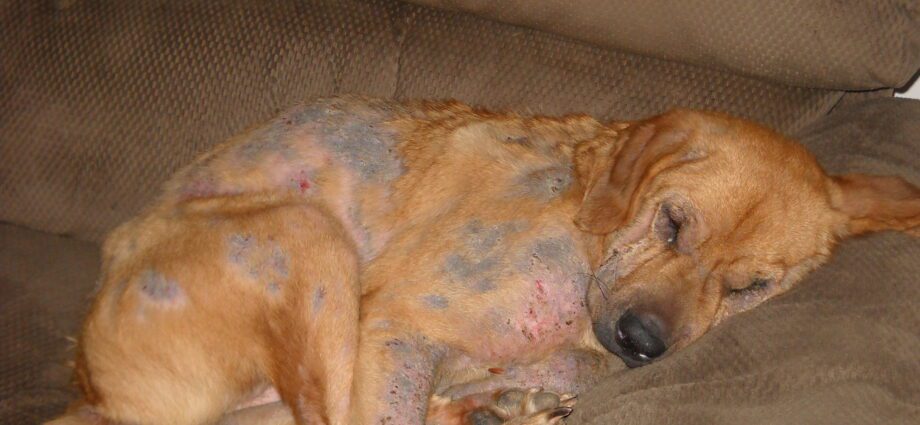Contents
Demodicosis in dogs: what is it?
Skin flora is normally made up of bacteria, yeasts and parasites such as demodex. Demodicosis is a parasitic disease with dermatological symptoms due to an anarchic multiplication of a demodex. It is found in many species, but each species of demodex remains very specific to its host: Demodex canis in dogs, Demodex equi in horses, Demodex musculi in humans, etc.
What is Demodex canis?
Demodex canis is a parasite in the upper third of the hair follicle that looks like a small worm, and will lodge at the base of the dog’s hair. It is elongated in shape, and very small (250 microns); therefore, it is invisible to the naked eye. It is exceptionally found in the ear canal, in the eyelid glands, in the lymph nodes, in the dermis, etc.
This parasite feeds on sebum and cellular debris. Demodex being part of the normal skin flora of animals, its presence in small quantities may therefore be asymptomatic. Demodicosis, that is to say the disease associated with the presence of Demodex, appears when this parasite will multiply in an anarchic and too important way. Often, this multiplication takes place during significant hormonal changes. Animals are therefore particularly sensitive during puberty, during their heat period, during pregnancy, etc.
This parasite lives only on the skin of the animal and it survives little in the external environment, only a few hours. Also, transmission mainly takes place from dog to dog through direct contact between an infected dog and a healthy animal, or from mother to puppy during these first days of life before the balance of the skin flora is reached. .
What are the symptoms of demodicosis?
Demodicosis is mainly manifested by itching and depilation. We will therefore observe a round lesion, without hair and which itches the dog.
Do not let the animal scratch because the micro-traumas created on the skin by the dog’s claws or teeth may become superinfected. These secondary infections increase the itching of the animal, which will scratch more and thus create a vicious circle that only effective treatment can stop.
The lesions are quite suggestive: there is a centrifugal alopecia with an erythematous ring on the outside and a hyperpigmented center. This type of lesion can be confused with dermatophytosis (ringworm) and bacterial folliculitis. However, demodicosis lesions can be distinguished from the presence of comedones, that is to say small black dots.
How is the diagnosis made?
If demodicosis is suspected, a consultation with your attending veterinarian is essential.
The latter will perform a skin scraping to confirm the presence of the parasite. The result of the scraping should be interpreted with caution. The presence of the parasite alone is not sufficient to speak of demodicosis because demodex is part of the dog’s normal skin flora. For this, a concordance between the clinical signs and the presence of the parasite is necessary.
Often, your veterinarian will also perform a trichogram, that is to say an analysis of the hair under a microscope in order to rule out the hypothesis of ringworm.
He will also be able to carry out a cutaneous layer of the lesion in order to observe whether the lesion has been contaminated by bacteria and is therefore superinfected, or not.
What treatment is being considered?
When demodicosis is objectified, antiparasitic treatment is necessary. How this treatment is given will depend on the size of the lesion. If the lesion is small, then a simple local treatment, using antiparasitic shampoo, will be sufficient. If the lesion is more extensive, a systemic treatment, in the form of tablets, will be necessary to treat the entire animal.
The treatments can be quite long because it is necessary that the skin flora of the animal finds a state of correct balance.
Sometimes, an antibiotic treatment will be necessary in addition to avoid or treat secondary bacterial infections that may have developed.










